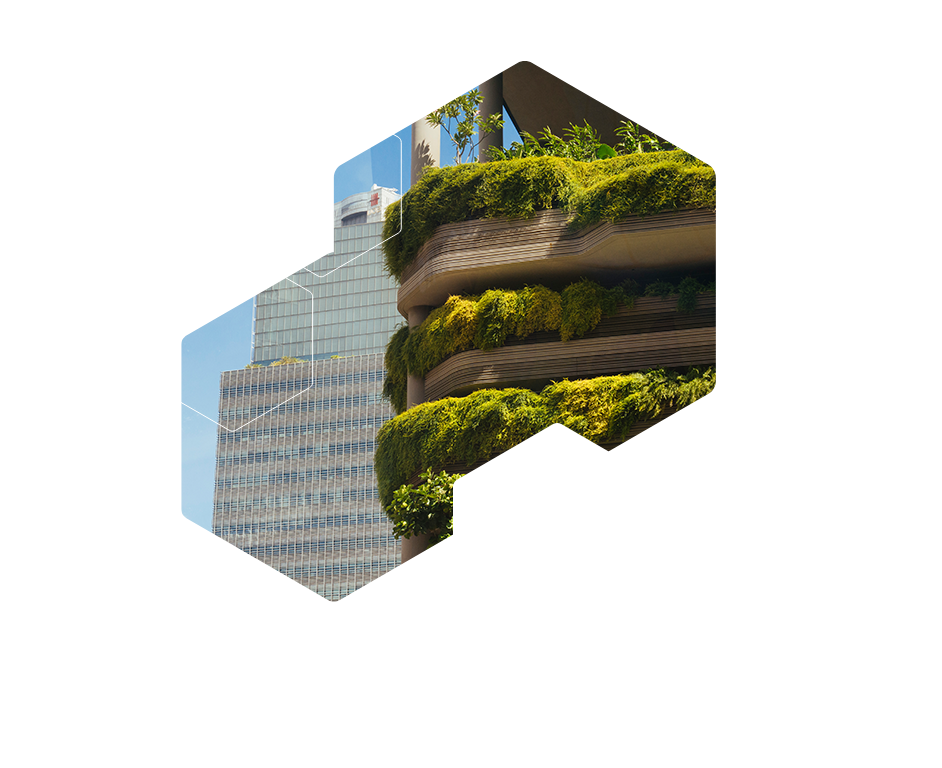
-
Table of contentsTable of contents
-
Download
-
Database
-
Home
Heatwaves are associated with increased mortality and health risks. The impact will be greatest on cities compared to rural areas due to the heat island effect. The need for buildings to offer heat relief has accelerated innovation in cooling technologies. At the same time, buildings themselves must stay protected from climate-related hazards such as floods.
Innovation examples
-

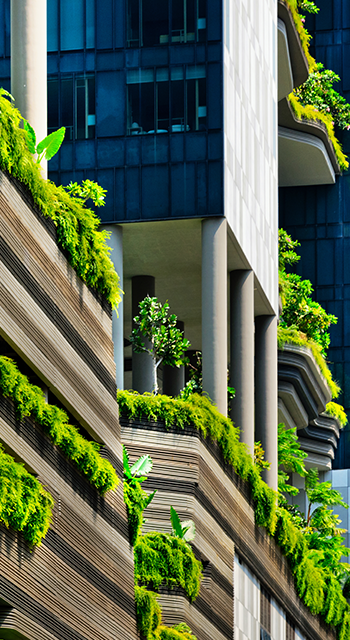
Innovation example: Singapore’s “Garden City”
A strong rise in economic prosperity triggered tall and densely built architecture in Singapore. The city started profiling itself as a “Garden…
More...
Read more5. Cities / Buildings / Innovation examplesInnovation example: Singapore’s “Garden City”
 Getty Images /© Nikada
Getty Images /© NikadaA strong rise in economic prosperity triggered tall and densely built architecture in Singapore. The city started profiling itself as a “Garden City” through a plan dating back to 1967 focusing on intensive tree-planting and parks. Studies show green roofs reduce median surface temperature by 30°C in hot and humid cities.[1] Today, new developments in Singapore must include greenery, for example in rooftops and facades. As a result, the city has more than 140 ha of sky-rise greenery, with plans to increase this to 200 ha by 2030.[2] In Marina Bay, located in a central Singapore, all developments must comply with a 100 percent greenery replacement policy. This stipulates that any ground-level greenery lost to development must be replaced with greenery planted in high-rise terraces and gardens. Singapore also boasts the world’s tallest public housing development – the Pinnacle@Duxton. This is a collection of seven 50-storey buildings connected by gardens on the 26th and 50th floors.[3] Singapore’s current sky-rise greenery incentive schemes fund up to 50 percent of rooftop and vertical greenery installation costs, with the objective of mitigating the urban heat island effect and improving air quality.[4]
Share this content -
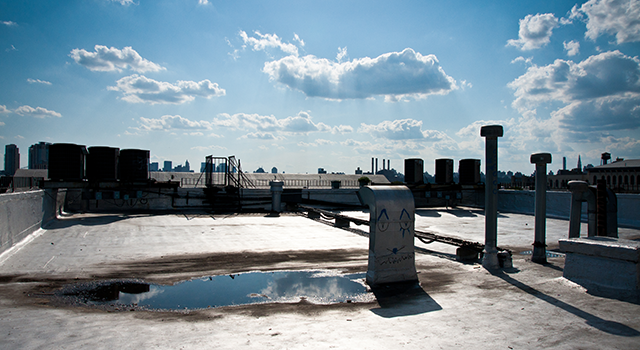

New York’s cool roofs and cooling centers
The New York “CoolRoofs” initiative has covered more than 500,000 m² of roof space on over 600 buildings in a white reflective coating. This is…
More...
Read more5. Cities / Buildings / Innovation examplesNew York’s cool roofs and cooling centers
 Getty Images /© kkong5
Getty Images /© kkong5The New York “CoolRoofs” initiative has covered more than 500,000 m² of roof space on over 600 buildings in a white reflective coating. This is to moderate the urban heat island effect and reduce the negative impact from projected future extreme heat events. The city estimates that these reflective surfaces reduce cooling costs by 10 to 30 percent and shrink the city’s carbon footprint by 1 ton of CO2 a year for every 232 m2 covered. In 2011, it was legislated that 75 percent of roof area on all new or substantially renovated low-slope roofs must have specific thresholds for minimum solar reflectance and maximum thermal emittance. To provide further cooling services, the city is making use of what is terms “cooling centers.” These are public spaces like libraries, community centers and senior centers cooled with conventional air-conditioning.[1]
Share this content -
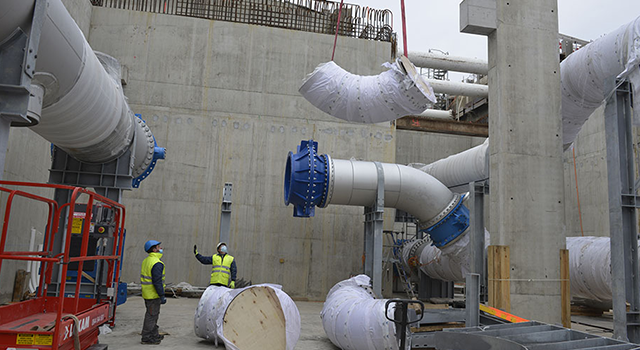
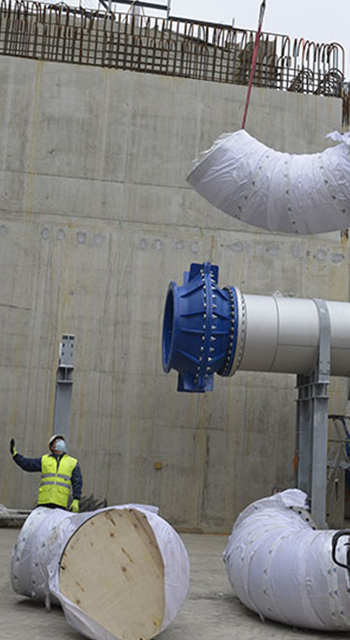
Geneva’s lake water cooling system
GeniLac is the biggest thermal exchange network in Geneva. The network uses water from Lake Leman to cool and heat city-center buildings. By…
More...
Read more5. Cities / Buildings / Innovation examplesGeneva’s lake water cooling system
 Photo:© Services Industriels Genevois
Photo:© Services Industriels GenevoisGeniLac is the biggest thermal exchange network in Geneva. The network uses water from Lake Leman to cool and heat city-center buildings. By adding a heat pump, it also provides heat. For 10 years the company SIG (Services Industriels Genevois) has utilized the lake as a natural and local resource for cooling and heating United Nations buildings (including that of WIPO) and those of other international organizations and companies in the city. Lake water is used to cool buildings in summer and the heat pump to heat them in winter. Heat pumps are directly based in each building. Water is pumped into an underground reservoir to a depth where the temperature is fairly constant. It is then piped toward a heat exchanger for cooling or a heat pump for heating. Cold or hot return water is then returned to the lake.
Share this content
Proven technologies
-


Green roofs for tilting and tiled roofs
Retrofitting roofs with greenery or creating green roofs on sloping surfaces can be challenging. Plantika provides a lightweight, modular green…
More...
Read more5. Cities / Buildings / Proven technologiesGreen roofs for tilting and tiled roofs
Plantika Getty Images /© Marcin_Szmyd
Getty Images /© Marcin_SzmydRetrofitting roofs with greenery or creating green roofs on sloping surfaces can be challenging. Plantika provides a lightweight, modular green roof system that enables extensive roof greening on sheet metal and tile roofs (for both existing and sloping roofs). This avoids time-consuming and costly planning and construction measures. The top vegetation layer consists of between five and eight different low-maintenance species such as grasses, herbs and sedums. Sedum plants are succulents able to store water in their leaves, and better at withstanding different weather events.
- Contracting type: For sale
- Technology level: Low
- Country of origin: Austria
- Availability: Austria
Share this content -


Green facades
Green spaces on buildings can be added to facades, as well as roofs. Green facades can serve as shade, cooling buildings and urban space through…
More...
Read more5. Cities / Buildings / Proven technologiesGreen facades
Respyre Getty Images /© moomusician
Getty Images /© moomusicianGreen spaces on buildings can be added to facades, as well as roofs. Green facades can serve as shade, cooling buildings and urban space through transpiration. Species such as moss are particularly well suited for green facades. This is because they have rhizoids instead of roots and therefore do not require deep soils to grow. The company, a Technical University of Delft spin-off, has developed a patent-pending bioreceptive concrete solution. Once hardened, the bioreceptive concrete’s surface is conducive to moss growth. Specific characteristics making Respyre’s concrete bioreceptive include its porosity and water retainment, micropore texture, acidity and nutrients that are included in the mixture.
- Contracting type: For sale
- Technology level: Medium
- Country of origin: The Netherlands
- Availability: The Netherlands
Share this content -
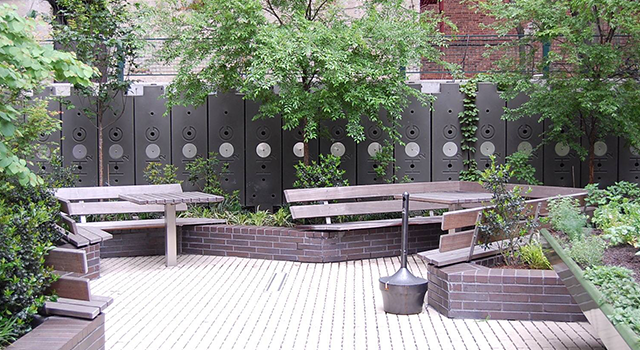
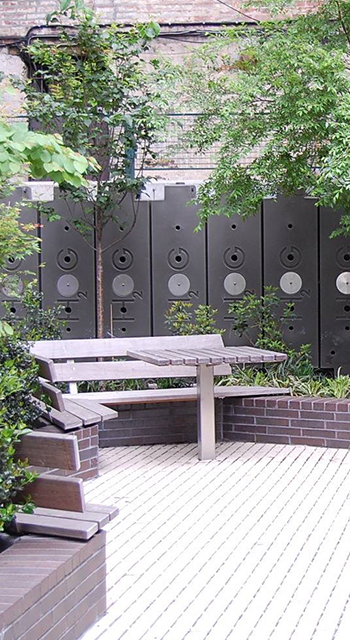
Wall-fitted rainwater catchment system
Green spaces on buildings can be added to facades, as well as roofs. Green facades can serve as shade, cooling buildings and urban space through…
More...
Read more5. Cities / Buildings / Proven technologiesWall-fitted rainwater catchment system
Rainwater HOG Photo:© Rainwater HOG
Photo:© Rainwater HOGGreen spaces on buildings can be added to facades, as well as roofs. Green facades can serve as shade, cooling buildings and urban space through transpiration. Species such as moss are particularly well suited for green facades. This is because they have rhizoids instead of roots and therefore do not require deep soils to grow. The company, a Technical University of Delft spin-off, has developed a patent-pending bioreceptive concrete solution. Once hardened, the bioreceptive concrete’s surface is conducive to moss growth. Specific characteristics making Respyre’s concrete bioreceptive include its porosity and water retainment, micropore texture, acidity and nutrients that are included in the mixture.
- Contracting type: For sale
- Technology level: Medium
- Country of origin: United States
- Availability: United States
Share this content -
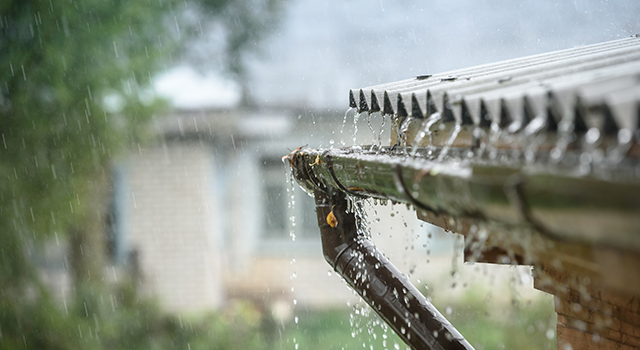

Rooftop rainwater harvesting
Stormsaver is the largest dedicated rainwater harvesting company in the United Kingdom. The company offers commercial and residential rainwater…
More...
Read more5. Cities / Buildings / Proven technologiesRooftop rainwater harvesting
Stormsaver Ltd Getty Images /© Kulkann
Getty Images /© KulkannStormsaver is the largest dedicated rainwater harvesting company in the United Kingdom. The company offers commercial and residential rainwater harvesting for buildings of different sizes. In their systems, rainwater is channeled from the roof of a building, filtered for large debris, and led into an above or under ground storage tank. Various functionalities avoid disturbing fine sediments at the bottom of a tank, prevent rodent entry and keep water quality high. The system also comprises sensors and a pump that lead and filter water from the tank for on-demand supply to various levels in the building.
- Contracting type: For sale
- Technology level: Medium
- Country of origin: United Kingdom
- Availability: United Kingdom
Share this content -

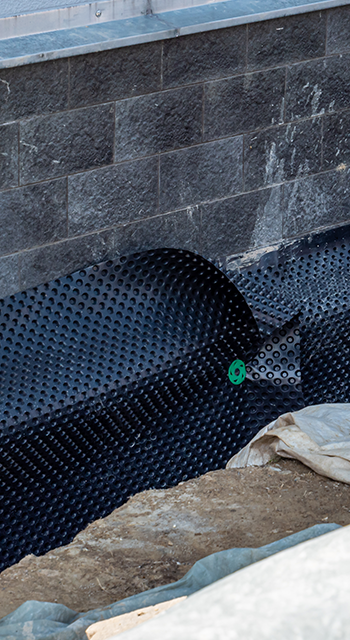
Building envelope waterproofing and foundation drainage
A drain is installed along the foundation of a building to collect excess groundwater and drain it away from the building. Nilex’s NuDrain Sheet…
More...
Read more5. Cities / Buildings / Proven technologiesBuilding envelope waterproofing and foundation drainage
Nilex Getty Images /© Animaflora
Getty Images /© AnimafloraA drain is installed along the foundation of a building to collect excess groundwater and drain it away from the building. Nilex’s NuDrain Sheet Drain product can be used both horizontally and vertically against retaining and foundation walls, bridge abutments, under slabs and so on. It quickly redirects water away from such surfaces and channels water to a collection system.
- Contracting type: For sale
- Technology level: Medium
- Country of origin: Canada
- Availability: Canada, United States
Share this content -
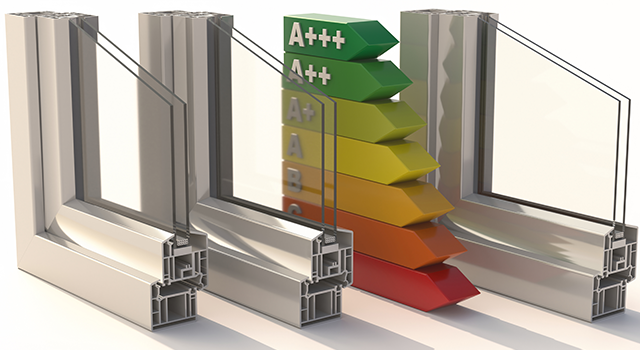

Double- and triple-paned windows with insulating gas
Among the window products provided by company SSG, the DuraComfort comprises two or more layers of insulating glass units with a cavity between.…
More...
Read more5. Cities / Buildings / Proven technologiesDouble- and triple-paned windows with insulating gas
Singapore Safety Glass PTE Ltd (SSG) Getty Images /© Rawf8
Getty Images /© Rawf8Among the window products provided by company SSG, the DuraComfort comprises two or more layers of insulating glass units with a cavity between. The perimeters of the window frames are filled with desiccant to absorb moisture. The cavity between the glass sheets can be filled with a gas such as air, argon and krypton to provide further insulation. Argon and krypton is more expensive than air but provide better insulation. These windows are particularly suitable for buildings with very high heating or cooling requirements, especially in places requiring temperature and humidity to be controlled.
- Contracting type: For sale
- Technology level: Medium
- Country of origin: Singapore
- Availability: Worldwide
Share this content -
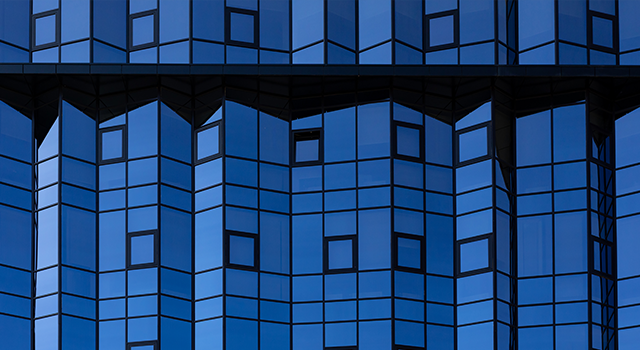
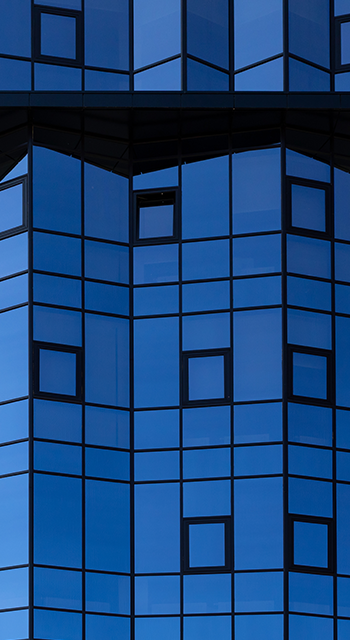
Ventilated facade
Eliane TEC provides ventilated facades that regulate temperature, air and light. The ventilated facades are integrated into a building’s envelope…
More...
Read more5. Cities / Buildings / Proven technologiesVentilated facade
Eliane TEC Getty Images /© Lari Bat
Getty Images /© Lari BatEliane TEC provides ventilated facades that regulate temperature, air and light. The ventilated facades are integrated into a building’s envelope to create a gap between the exterior and inner walls. As air circulates between the walls during warm weather, it gets heated through a “chimney effect,” whereby air is pushed upwards and building temperature reduced. Conversely, during cold weather, the air gap instead balances the temperature of the building and reduces moisture risk.
- Contracting type: For sale
- Technology level: Medium
- Country of origin: Brazil
- Availability: Worldwide
Share this content
Frontier technologies
-
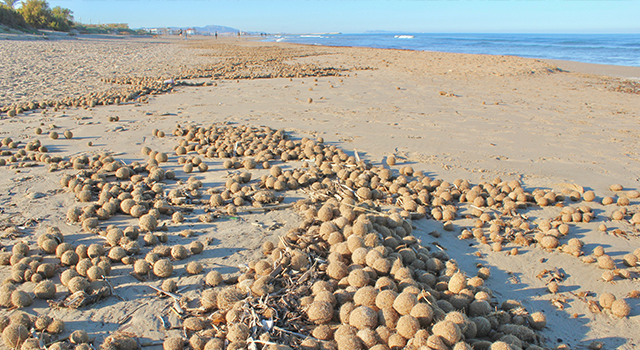

Mediterranean seagrass as insulation
Natural alternatives to synthetic insulation materials are becoming increasingly popular. They include hemp, cellulose (waste paper), reed,…
More...
Read more5. Cities / Buildings / Frontier technologiesMediterranean seagrass as insulation
NeptuTherm Getty Images /© Scott O'Neill
Getty Images /© Scott O'NeillNatural alternatives to synthetic insulation materials are becoming increasingly popular. They include hemp, cellulose (waste paper), reed, elephant grass, cork and sheep’s wool. One innovative alternative is using Mediterranean seagrass (Posidonia oceanica, or “Neptune grass”) as insulation. This provides warmth in winter and coolness in summer. The company NeptuTherm is collecting seagrass balls from Albania and Tunisia and transforming them into insulation material for buildings. They claim the material is soundproof, mould resistant and biodegradable. The grass grows at several dozen meters below the surface and is torn loose from the seabed during storms, forming fist-sized balls which then wash up on beaches.
- Contracting type: For sale
- Technology level: Low
- Country of origin: Germany
- Availability: Germany
Share this content -


Thermocrete concrete with cooling effect
Thermocrete is a concrete mixed with Thermocol (polystyrene) balls. These balls act as air cavities, isolating and reducing heat transfer through…
More...
Read more5. Cities / Buildings / Frontier technologiesThermocrete concrete with cooling effect
Prism Johnson Limited Getty Images /© Tatiana
Getty Images /© TatianaThermocrete is a concrete mixed with Thermocol (polystyrene) balls. These balls act as air cavities, isolating and reducing heat transfer through the material, with a cooling potential of 2°C to 3°C. Thermocrete is often used in chimney constructions but also available as a construction panel material. Novel alternatives to concrete and polysterene are under development. They include products made from biodegradable materials such as agricultural waste and fungi. Market availability at present is limited. But will likely grow with increased demand.[1] Prism Johnson Limited is a building materials company that operates 97 ready-mix concrete plants in India. Thermocrete is included in their product list.
- Contracting type: Service
- Technology level: Medium
- Country of origin: India
- Availability: India
Share this content
Horizon technologies
-
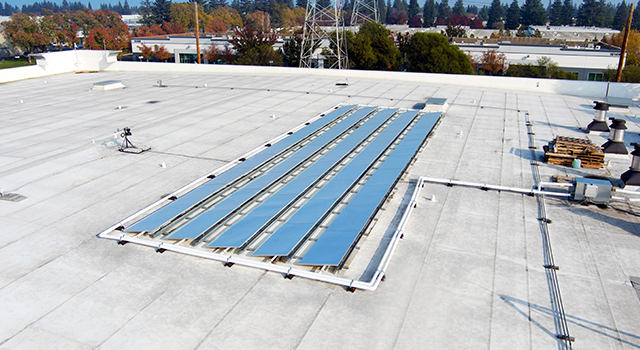

Radiative cooling
SkyCool Systems is a startup that has developed a thin film coating and rooftop cooling panel. Combined, they reject heat through radiative…
More...
Read more5. Cities / Buildings / Horizon technologiesRadiative cooling
SkyCool Systems Photo:© SkyCool Systems Inc.
Photo:© SkyCool Systems Inc.SkyCool Systems is a startup that has developed a thin film coating and rooftop cooling panel. Combined, they reject heat through radiative cooling even below ambient air temperature while under direct sunlight. Radiative cooling is an emerging technology able to function without the need for electricity. The technology exploits the fact that a surface looking skyward emits more thermal radiation than it receives. The thin film acts as a mirror, reflecting the Sun’s light and heat thereby keeping fluid-filled panels below the film cool. The panels can be connected to an air-conditioning and refrigeration system so it runs more efficiently.
- Contracting type: Collaboration
- Technology level: High
- Country of origin: United States
- Availability: N/A
Share this content -
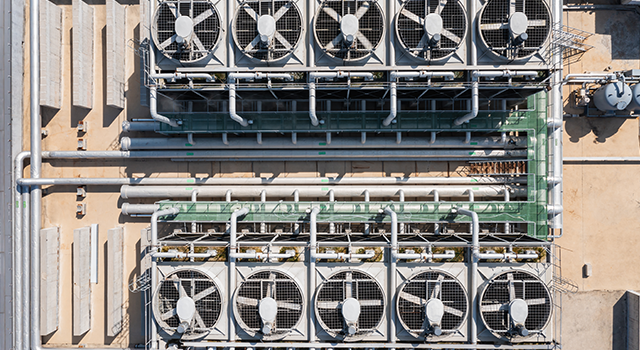
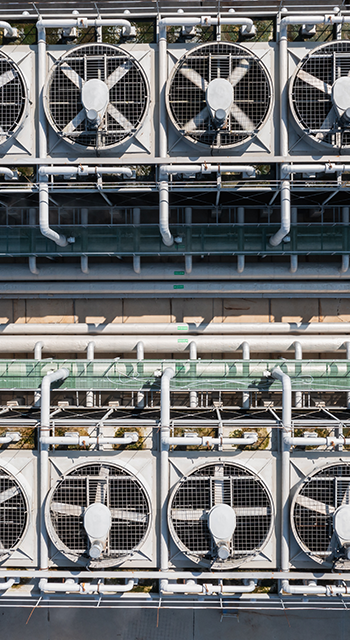
Desiccant-enhanced evaporative air conditioner (DEVap)
NREL has developed the concept of a desiccant-enhanced evaporative air conditioner (DEVap). Desiccants are substances that absorb moisture from…
More...
Read more5. Cities / Buildings / Horizon technologiesDesiccant-enhanced evaporative air conditioner (DEVap)
National Renewable Energy Laboratory (NREL) Getty Images /© koiguo
Getty Images /© koiguoNREL has developed the concept of a desiccant-enhanced evaporative air conditioner (DEVap). Desiccants are substances that absorb moisture from air. They are typically found in the small packets included in the packaging when you buy certain products. Moisture in the air is often a barrier for air-conditioner efficiency. The DEVap air conditioner uses membrane technology to combine the efficiency of evaporative cooling with the drying potential of liquid desiccant salt solutions. Essentially, the system uses water and liquid desiccant to draw in air from outside, dehumidify it and return cool, dry air. The technology is now being further developed for commercialization together with partners such as Synapse. It has the potential to save 50 to 90 percent on energy compared to other advanced solutions on the market today.
- Contracting type: N/A
- Technology level: High
- Country of origin: United States
- Availability: N/A
Share this content -

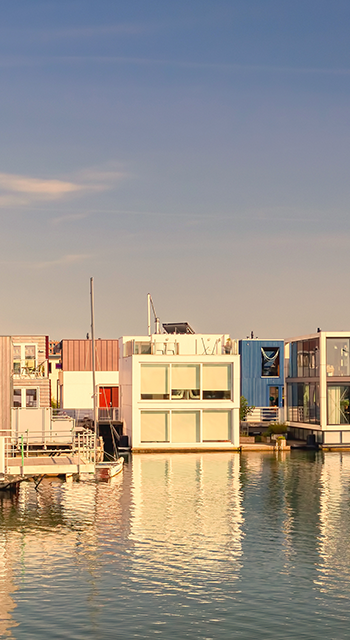
Floating houses
Floating houses and islands have been around for many centuries and are an established technique in countries such as Peru (Uros Islands) and…
More...
Read more5. Cities / Buildings / Horizon technologiesFloating houses
BACA Architects Ltd Getty Images /© DutchScenery
Getty Images /© DutchSceneryFloating houses and islands have been around for many centuries and are an established technique in countries such as Peru (Uros Islands) and Iraq (Al-Tahla floating islands). However, rising sea-levels and increased flood events are leading to such ideas being adopted in other parts of the world, and with them the modernization of floating homes. The BACA floating house is one example. BACA Architects has developed the United Kingdom’s first amphibious house. Located on the Thames riverbank, the house rests on the ground during dry conditions but rises up in its dock and floats during a flood event. The entire house thus rises and falls with the water level while remaining in position. Utilities are connected by flexible cabling and service pipes designed to extend up to 3 m. This protects key services during flood events.
- Contracting type: Service
- Technology level: High
- Country of origin: United Kingdom
- Availability: United Kingdom
Share this content -

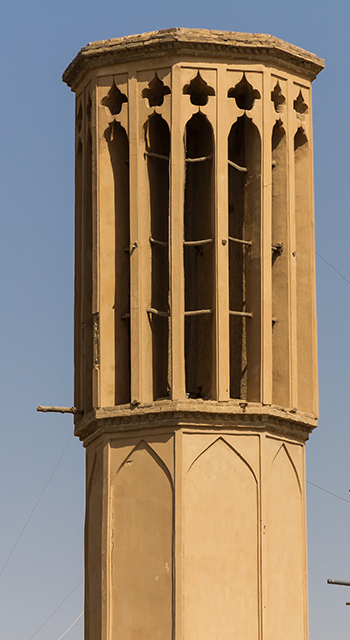
Advanced wind towers
Ancient Persian wind catchers, or bâdgirs, have mostly been replaced with modern air-conditioning systems. But wind catchers are now…
More...
Read more5. Cities / Buildings / Horizon technologiesAdvanced wind towers
Free Running Buildings Getty Images /© Domicile Media
Getty Images /© Domicile MediaAncient Persian wind catchers, or bâdgirs, have mostly been replaced with modern air-conditioning systems. But wind catchers are now being revitalized through modern design. Free Running Buildings has developed a wind tower technology that provides passive building ventilation and cooling. It can lower the temperature of incoming air by between 3–6°C and demands less energy than other cooling systems. With modern air-conditioning systems being major energy consumers, such innovative approaches toward natural ventilation and cooling systems are gaining attention. The company, in collaboration with Qatar University, has adapted this technique for the 2022 FIFA World Cup in Qatar. The cooling technology has been installed at the 40,000 seat Khalifa International Stadium in Doha.
- Contracting type: Service
- Technology level: High
- Country of origin: United Kingdom
- Availability: Worldwide
Share this content
The pressure to adapt is building
It is “virtually certain” that warm daily temperature extremes will increase globally throughout the 21st century.[29] The increase will be both in frequency and magnitude, with heat-stressed cities…
Read more
The pressure to adapt is building
It is “virtually certain” that warm daily temperature extremes will increase globally throughout the 21st century.[29] The increase will be both in frequency and magnitude, with heat-stressed cities an enhanced risk. In Africa, it is projected that more than 40 million city dwellers may be exposed to extreme heat within the next 40 years.[30] In highly humid conditions, temperatures get dangerous at around 35oC. At this point the human body can no longer cool itself by sweat alone.[31] As the climate warms, the requirement for buildings and housing to offer a cooling effect and provide thermal safety and comfort increases. At the same time, building design demands an increased resilience against excessive rainfall, floods, snow, tornados and wildfires in different parts of the world. These demands are difficult from a planning perspective. Buildings represent long-term investments planned for decades into the future.[32] Strengthening buildings’ adaptiveness and resilience to extreme heat and weather events will require a combination of hard technologies to strengthen and protect, and soft approaches such as climate proofing through building codes.
Read less
Cool and green buildings
Buildings have traditionally relied on “passive” cooling technologies like natural ventilation, window orientation, insulation and shutters. As cities adapt to increasingly hot temperatures, such approaches are no longer adequate. The…
Read more
Cool and green buildings
Buildings have traditionally relied on “passive” cooling technologies like natural ventilation, window orientation, insulation and shutters. As cities adapt to increasingly hot temperatures, such approaches are no longer adequate. The International Energy Agency (IEA) estimates a staggering 5.6 billion air-conditioning units will be in use by 2050, up from 1.6 billion today.[33] Much effort is now being given to technologies that enhance the energy efficiency of such units, as their currently large carbon footprint is actually exacerbating cooling need, often referred to as the “cold crunch”.[34] In countries like Switzerland, environmental policies even limit their installation. Mechanical cooling systems’ high energy use is triggering innovative approaches to green heating and cooling. They include solar-powered air conditioners, desiccant cooling and absorptive cooling from industrial waste heat. Meanwhile, so-called free cooling uses lake and sea water, whereas dry cooling is applicable to more water scarce zones. Some innovators are modernizing ancient Persian wind towers and looking toward advanced natural ventilation systems. Conventional insulation materials are commonly obtained from petrochemicals. But interest in recycled or green insulation materials (such as hemp, flax and wool) is growing. Meanwhile, cities like Singapore and Paris are cooling roofs with vegetation and reflective surfaces for heat relief – a rational approach, as over 60 percent of most urban surfaces is either roof or pavement.[35] Green rooftops and facades can reduce temperatures, harvest water and improve poor air quality which is otherwise worsened by climate change. Cool roofing products use highly reflective materials that lower roof temperatures.
Read less
Water harvesting and hazard-proofing
Green roof installation could reduce rainfall runoff by over 50 percent due to the vegetation absorbing the water. If half the roofs within a region were covered, a total runoff reduction of 7.5 percent could be achieved.…
Read more
Water harvesting and hazard-proofing
Green roof installation could reduce rainfall runoff by over 50 percent due to the vegetation absorbing the water. If half the roofs within a region were covered, a total runoff reduction of 7.5 percent could be achieved.[36] Alternatively, water can be captured through water harvesting technologies. These capture and filter rainfall and runoff from roofs and building exteriors for storage in tanks either above or below ground. The growing interest in water harvesting technologies is also due to the added benefit of alleviating water scarcity surges. Advances in filtering systems, sensors and pumps allow the water to be reused on demand for use in toilets, washing machines and by outside taps. However, this requires additional piping systems. Various regions, such as Haryana state in India, have mandated the installation of rainwater harvesting systems for groundwater recharge. This applies to all new buildings, irrespective of the roof area. Buildings are also adapting to extreme weather and floods through technologies that pump floodwater away from basements (sump pumps), reinforce concrete and water-proof building envelopes (such as roofs, doors and exterior walls).
Some of the technologies described have been integrated into urban planning concepts such as the sponge city design, so as to maximize benefits beyond the scale of buildings. As a result, these technologies could bring additional benefits to the region as a whole. However, there are huge variations in the impacts experienced and communities’ abilities to adapt. Many of the most at-risk regions from flooding are in Asia.[37] For populations living in informal settlements and housing the only solutions to flooding might include digging trenches around houses, building small retaining walls to prevent water from flooding in or raising houses a couple of meters above ground. While this may alleviate some flooding problems, it is inadequate in adapting to flash floods. This further points to a discrepancy between the supply of and demand for technologies and solutions in relation to their accessibility for regions most in need of climate adaptation.
Read less
Sufri, S., F. Dwirahmadi, D. Phung and S. Rutherford (2020). A systematic review of community engagement (CE) in disaster early warning systems (EWS). Progress in Disaster Science, 5, 100058.
IPCC (2022). Working Group II Sixth Assessment Report. Impacts, adaptation and vulnerability. Summary for policymakers. Geneva: Intergovernmental Panel on Climate Change. available: https://www.ipcc.ch/working-group/wg2/
IEA (2018). The future of cooling: opportunities for energy-efficient air conditioning. International Energy Agency (IEA). Available at: https://iea.blob.core.windows.net/assets/0bb45525-277f-4c9c-8d0c-9c0cb5e7d525/The_Future_of_Cooling.pdf
Climate-ADAPT (2016). Urban. The European Climate Adaptation Platform Climate-ADAPT. Available at: https://climate-adapt.eea.europa.eu/en/eu-adaptation-policy/sector-policies/urban [accessed October 2022].
Leflaive, X., B. Krieble and H. Smythe (2020). Trends in water-related technological innovation: Insights from patent data, OECD Environment Working Papers 161. OECD Publishing. Available at: https://www.oecd-ilibrary.org/content/paper/821c01f2-en.
Kunz, D., H. Müller, and C. Soltmann (2012). Patent landscape report on solar cooling technologies. Geneva: World Intellectual Property Organization (WIPO). Available at: https://www.wipo.int/edocs/pubdocs/en/patents/948/wipo_pub_948_3.pdf.
Renaldi, R., N.D. Miranda, R. Khosla and M.D. McCulloch (2021). Patent landscape of not-in-kind active cooling technologies between 1998 and 2017. Journal of Cleaner Production, 296, 126507.
CDP (2022). Climate Change. Carbon Disclosure Project. Available at: https://www.cdp.net/en/climate [accessed October 2022].
CPI (2021). Global landscape of climate finance 2021. Climate Policy Initiative (CPI). Available at: https://www.climatepolicyinitiative.org/publication/global-landscape-of-climate-finance-2021/.
Richmond, M. and N. Upadhyaya (2021). An analysis of urban climate adaptation finance. Climate Policy Initiative (CPI). Available at: https://www.climatepolicyinitiative.org/publication/an-analysis-of-urban-climate-adaptation-finance/.
UNEP (2021). Adaptation Gap Report 2021: The gathering storm. Nairobi: United Nationals Environment Programme. available: https://www.unep.org/resources/adaptation-gap-report-2021
Smith, B., D. Brown, and D. Dodman (2014). Reconfiguring urban adaptation finance. London: International Institute for Environment and Development (IIED). Available at: https://iied.org/10651iied.
CDP (2018). Cities at risk: dealing with the pressures of climate change. Carbon Disclosure Project. Available at: https://www.cdp.net/en/research/global-reports/cities-at-risk [accessed October 2022].
Bott, L.-M., T. Schöne, J. Illigner, M. Haghshenas Haghighi, K. Gisevius and B. Braun (2021). Land subsidence in Jakarta and Semarang Bay – The relationship between physical processes, risk perception, and household adaptation. Ocean & Coastal Management, 211, 105775.
Takebayashi, H. and M. Moriyama (2020). Chapter 1 – Background and purpose. In Takebayashi, H. and M. Moriyama, eds., Adaptation measures for urban heat islands. Cambridge, MA: Academic Press, 1–8.
EEA (2018). 10 case studies: how Europe is adapting to climate change. Luxembourg: European Environment Agency (EEA). Available at: https://climate-adapt.eea.europa.eu/en/about/climate-adapt-10-case-studies-online.pdf.
Cristiano, E., S. Farris, R. Deidda and F. Viola (2021). Comparison of blue-green solutions for urban flood mitigation: A multi-city large-scale analysis. PloS ONE, 16(1), e0246429.
Kappou, S., M. Souliotis, S. Papaefthimiou, G. Panaras, J. A. Paravantis, E. Michalena, J.M. Hills, A.P. Vouros, A. Ntymenou and G. Mihalakakou (2022). Cool pavements: State of the art and new technologies. Sustainability, 14(9). Available at: www.mdpi.com/2071-1050/14/9/5159 [accessed October 2022].
NASA (2012). Bright is the new black: New Yorks roofs go cool. Available at: https://www.nasa.gov/topics/earth/features/ny-roofs.html [accessed October 2022].
Allen, S., V. Barros, O. Cardona, S. Cutter, O.P. Dube, K. Ebi, J. Handmer, A. Lavell, M. Mastrandrea, G. McBean, R. Mechler and N. Nicholls (2012). Managing the risks of extreme events and disasters to advance climate change adaptation. Special report of Working Groups I and II of the Intergovernmental Panel on Climate Change. New York, NY: Cambridge University Press.
Sherwood, S.C. and M. Huber (2010). An adaptability limit to climate change due to heat stress. Proceedings of the National Academy of Sciences, 107(21), 9552-55.
Pyke, C.R., S. McMahon, L. Larsen, N.B. Rajkovich and A. Rohloff (2012). Development and analysis of climate sensitivity and climate adaptation opportunities indices for buildings. Building and Environment, 55, 141–49.
IPCC (2014). Buildings. In: Climate Change 2014: Mitigation of climate change. Contribution of working group III to the fifth assessment report of the intergovernmental panel on climate change. Cambridge, UK and New York, USA: Intergovernmental Panel on Climate Change (IPCC).
Mentens, J., D. Raes and M. Hermy (2006). Green roofs as a tool for solving the rainwater runoff problem in the urbanized 21st century? Landscape and Urban Planning, 77(3), 217–26.
Nicholls, R.J., S. Hanson, C. Herweijer, N. Patmore, S. Hallegatte, J. Corfee-Morlot, J. Chateau and R. Muir-Wood (2007). Ranking of the world’s cities most exposed to coastal flooding today and in the future: Executive Summary. Organisation for Economic Cooperation and Development (OECD).
Jamei, E., H.W. Chau, M. Seyedmahmoudian and A. Stojcevski (2021). Review on the cooling potential of green roofs in different climates. Science of the Total Environment, 791, 148407.
Government of Singapore (2022). Gardens in the sky. Available at: https://www.nparks.gov.sg/skyrisegreenery [accessed October 2022].
Kolczak, A. (2017). This city aims to be the world’s greenest. National Geographic. Available at: https://www.nationalgeographic.com/environment/article/green-urban-landscape-cities-Singapore [accessed October 2022].
NYC Business (2022). NYC CoolRoofs. City of New York. Available at: https://www1.nyc.gov/nycbusiness/article/nyc-coolroofs [accessed October 2022].
UNEP (2021b). A practical guide to climate-resilient buildings and communities. Nairobi: United Nations Environment Programme (UNEP). Available at: https://wedocs.unep.org/xmlui/bitstream/handle/20.500.11822/36405/Adapbuild.pdf.
